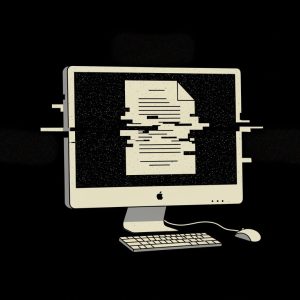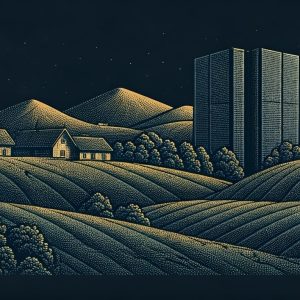Apple has three display cards for the Mac giving photo quality, faster applications
As part of its Macintosh IIfx launch (CI No 1,388) Apple revealed a new family of Macintosh Display Cards for its computer range. The 4.8 card is a entry level video card that supports a wide range of graphics on all Macintosh computers; while the 8.24 card is an extended version of the 4.8 and offers more graphics capabilities, including photo-quality colour for the first time. At the head of the family is the 8.24 GC card which has a graphics co-processor and video card that speeds up all Macintosh applications by up to 30 times. All three products are standard NuBus cards that work transparently with the Macintosh architecture and support all Apple monitors. They are all compatible with interlaced devices such as televisions and video recorders. All three cards support thousands of Macintosh applications. As its name implies, the 4.8 card displays images in either 4-bit mode or 8-bit mode depending on the monitor. On the following monitors it provides these capabilities: 256 greys or colours on the AppleColor High-Resolution RGB Monitor, 256 greys on the Apple High-Resolution Monochrome Monitor and 16 greys on the Apple Macintosh Portrait Display or Apple Two-Page Monochrome Monitor. The Macintosh Display Card VRAM Kit enables the 4.8 card to support true colour and true grey scale, as found on the Macintosh Display Card 8.24. The kit also extends the 4.8 card’s capabilities to display 24-bit true colour, as well as full 256-level grey scale. The 8.24 card also supports Apple Convolution, a process that provides flicker-free images on interlaced devices such as televisions and video recorders. While the 8.24 GC card has all the standard features of the 8.24 card it has the added attraction of boosting graphics performance by up to 30 times. It does this by accelerating all graphics routines through the use of a dedicated Am29000 RISC processor running at 30MHz. This component shares graphics processing responsibilities with the Mac’s processor thus enabling the main processor to work on other tasks while the graphics co-processor executes graphics commands. The GC card also accelerates all applications and operations that use QuickDraw, the imaging model which generates the Macintosh graphics display, since the card comes with a single software file that contains a version of QuickDraw optimised for a co-processed environment, thereby increasing graphics performance and accelerating the entire imaging model. This enhancement provides users with increased performance across a broad range of uses from moving windows and redrawing pictures to scrolling and scaling images. The GC card can be upgraded in two main ways. First, the Macintosh Display Card DRAM Kit, can upgrade it to up to 2Mb of on-board DRAM. This increase in memory can greatly improve the performance of animations, presentations or any applications that manipulate complex images. Secondly, because the Am29000 processor is put in a state of readiness through a QuickDraw software file, the GC card will be able to take advantage of future QuickDraw enhancements simply by replacing the file. Apple recommends that the Macintosh Display Cards be used with System Software 6.05 or greater. The 8.24 and 8.24 GC cards need 2Mb of memory to exploit 24-bit colour. All cards will be available worldwide through Apple authorised resellers. The 8.24 card is available now for $900. Other graphics products will ship in the summer as follows: the 4.8 card costs $648, the 8.24 GC card sells for $2,000, while the VRAM Kit is priced at $350 and the DRAM Kit costs $500.
New 6.05 release of MacOS
Macintosh System Software 6.05 is the latest version of the operating system for the Macintosh family. It has hardware support for the Macintosh IIfx, the Macintosh Display Card 8.24 and the Macintosh Display Card 8.24 GC. Version 6.05 trans-parently co-exists in networked environments with Macintosh System Software versions 6.02 and above and is available immediately priced at $50 per version.
Unix,
MacOS come together in A/UX 2.0
Apple has a new version of the Unix operating system – A/UX version 2.0. This version retains the features of previous releases of A/UX and adds three major new features: the Macintosh graphics-based desktop; the ability to run multiple Unix, X Window System and Macintosh applications simultaneously; and Unix functionality in an easy-to-use manner. As with previous versions, A/UX 2.0 is based on AT&T System V.2.2 which runs the large family of Macintosh applications and complies with Unix standards such as IEEE POSIX 1003.1-1988 FUS and AT&T System V Interface Definition. More importantly, A/UX 2.0 offers a number of new features which pulls the Unix environment more fully into the Apple Mac users’ grasp, with the aim of leading to a meeting of two markets – the mainstream and the technical. For example, all the elements of the Macintosh desktop including point and click simplicity, menu bars and icons have been put into A/UX 2.0. It also supports MultiFinder, 32-Bit QuickDraw, and the Macintosh start-up and shutdown process. Additionally, A/UX 2.0 supports text cut-and-paste between Unix and Mac environments, plus graphics cut-and-paste between Macintosh applications. Because of these capabilities Apple believes that users will find A/UX 2.0 suitable for such applications as large financial models, animation, graphic design, page layout, and scientific and engineering activities. The complete A/UX 2.0 package including off-the-shelf Macintosh applications, A/UX, Macintosh hardware, and support is available through A/UX-authorised Apple resellers. The operating system requires at least 4Mb of memory and runs on the following hardware: Macintosh SE/30, Macintosh II (with PMMU installed), Macintosh IIx, Macintosh IIcx, Macintosh IIci and Macintosh IIfx. Obviously the best Mac to run A/UX 2.0 on is the IIfx as it alone offers the operating system SCSI direct memory access and input-output processor capabilities. By this summer AU/X 2.0 will be available on Apple CD-ROM disk, 800Kb floppy disks, a 40Mb Apple Tape Cartridge or preinstall-ed on the 4Mb to 80Mb hard disk versions of the IIci, IIcx, IIfx Macintoshes or preinstalled on an 80Mb external hard disk. Pricing will be announced at a later date. Current A/UX users can upgrade to A/UX 2.0 through a software update subscription service or by purchasing A/UX 2.0 update products on CD-ROM, floppies or tape. Customers that buy A/UX 1.1.1 operating system software starting from this week will receive a free upgrade to A/UX 2.0, which is set for a summer release. Those that buy updates to A/UX 1.1.1 from this week do not qualify for this programme. All A/UX customers will be offered an update to A/UX 2.0 this summer.






